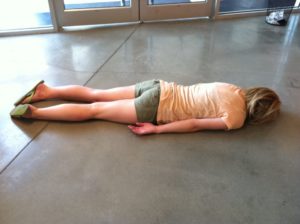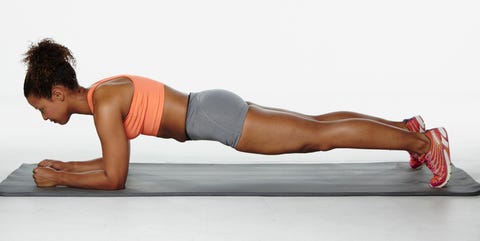The ideal amount of time is shorter than you might think.
Planks are one of those exercises that make their way into almost any core workout. And when done the right way, they not only fire up your core, but muscles in your shoulders and legs too.
With that said, there is some room for error when it comes to getting the biggest bang for your buck—improper form and timing can mess with its benefits.
So how do you actually do a proper plank—and how long should you hold one? We tapped Noam Tamir, C.S.C.S., owner of TS Fitness in New York City and Stuart McGill, Ph.D., author of Ultimate Back Fitness and Performance, to find out.
Watch: Overlandsite
Planking Benefits
Both Tamir and McGill agree that adding planks into your regular cross-trainingroutine helps to prevent injury, since they make your muscles stronger.
“Planks recruit your entire body to create tension of the core—when done right, they can be really good for keeping your back healthy and strengthening your core muscles,” Tamir says.
Planks are a core-stabilizing exercise, McGill adds, which helps you become more efficient at running fast.
“The runner is trying to create athleticism in the leg muscles that cross their hip,” McGill says. “Creating stiffness in the trunk helps move your legs.”
Not to mention, planks are a pretty basic exercise that require no extra equipment—so they’re super easy to incorporate into any workout.
[The best runners don’t just run, they hit the gym. The Beginner’s Guide to Strength Training will teach you all the fundamentals to get the most out of your weight session.]
How Long Should You Hold a Plank?
You’ve probably heard different things from different people—30 seconds, two minutes, as long as you possibly can? Recently, Dana Glowacka of Montreal, Canada, set a world record on May 18, by holding one for four hou rs and 20 minutes. But don’t worry, you don’t need to hold a plank anywhere near that long to reap the benefits. In fact, the ideal amount of time is shorter than you might think.
rs and 20 minutes. But don’t worry, you don’t need to hold a plank anywhere near that long to reap the benefits. In fact, the ideal amount of time is shorter than you might think.
“Research shows that for most people, holding a plank for one minute at a time creates a resilient torso,” McGill says. “But if you have a history of back pain, hold for 10 second increments to reduce your risk of back pain triggers.”
Tamir agrees that it’s not necessary to hold a plank for a long period of time. If you’re truly bracing all of your muscles, it can be hard for someone to hold a plank for longer than 20 seconds—and a minute at most. He recommends bursts of 20 seconds at a time.
“Long planks do more damage than good. With a four-hour plank, you’re not creating tension and strengthening your muscles—you’re just holding the position,” Tamir says. “Fitness should be about functional, real-life movements. Holding a plank for a long time isn’t functional.”
How Do You Do a Proper Plank?
According to Tamir, the hardstyle plank creates the most tension in your muscles.
Here’s how to do it: Get into plank position with your elbows on the ground right underneath your shoulders your feet hip-width apart. Make sure your back is flat and your head and neck are in a neutral position. Drive your elbows into the floor, and squeeze your quads, glutes, and core. Inhale through your nose and exhale through your mouth—don’t hold your breath.
A true love for sports




Recent Comments